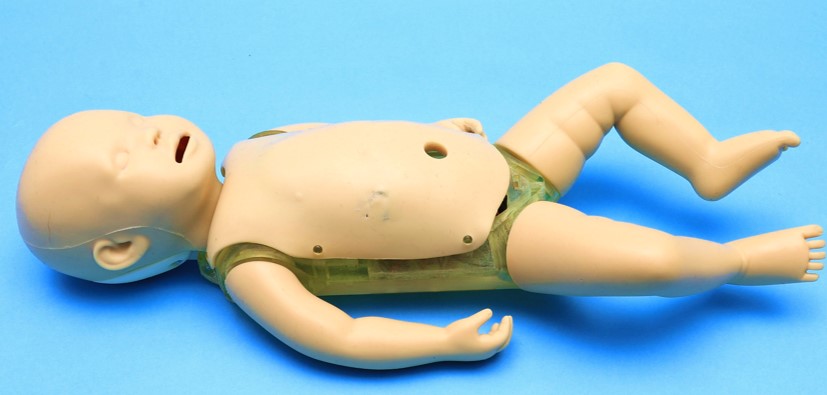Abstract
About 15% of newborns don’t start spontaneous breathing immediately after birth and require some resuscitations.
In Japan, about one million newborns are born each year, so more than one hundred thousand newborns need to be
resuscitated . The Japanese Society for Perinatal and Neonatal Medicine established the guideline in such cases;
Neonatal Cardio-Pulmonary Resuscitation (NCPR). However, deliveries can happen in various places; hospitals,
obstetrics clinics and midwives’ houses, and the specialists can’t be there every time. For this reason, it is
important not only for specialists but also for all health-care workers to train NCPR.
The training courses using manikin simulators are being held to popularize NCPR. The training with manikin
simulators has problems: the large burden on the instructors and the low reality of the training.
The purpose of this research is realizing the neonatal resuscitation training system that can simulate various
scenarios according to the guideline and present advice based on the quantitative evaluation of treatments. In
2018, we developed the neonatal resuscitation simulator WAKABA-3 (WAseda Kyotokagaku Airway BAby-No.3.) This
simulator can simulate the breathing motion of the inspiratory retraction, which is the indication of the
treatment in the NCPR algorithm. Additionally, it has inherited the functions of the previous research
(WAKABA-2, 2017): simulation of the spontaneous breathing motion and measurement of the chest compression.
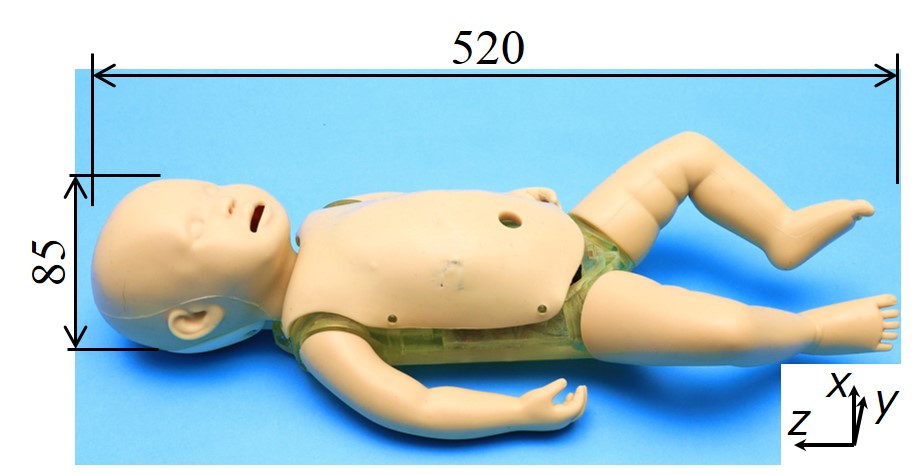
Fig.1 WAKABA-3
Internal Structure
As well as WAKABA-1 and WAKABA-2, WAKABA-3 has the body which equivalent to the average size of the healthy
newborns, and it has the face and the limbs using human-like flexible materials. In addition, the airway
from the mouth to the lungs was made from the flexible material, and it has a tongue, an epiglottis, and a
branch to esophagus. These flexible parts were produced by the joint research company, Kyoto Kagaku Co.,
Ltd.
WAKABA-3 is equipped with the mechanism for the breathing motion of the inspiratory retraction; it was
designed so that the WAKABA-2’s mechanisms for simulating the spontaneous respiration and measuring the
chest compression can be mounted together. The inspiratory retraction mechanism moves up and down with
balancing the force driven by the solenoids and the elastic force of the springs and skin material. The
position, the depth, and the shape of the retraction were determined from the results of the questionnaire
survey to the seventeen neonatal physicians. The pictures show the internal mechanism in the simulator, the
schematic diagram of the mechanism, and the surface of the abdomen during the inspiratory retraction
breathing.
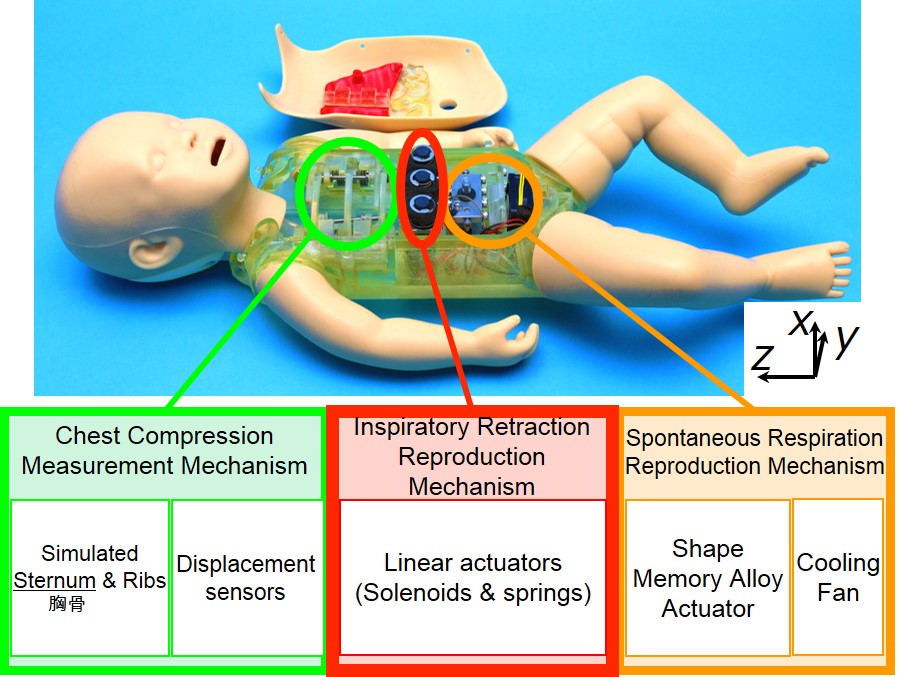
Fig.2 Internal structure
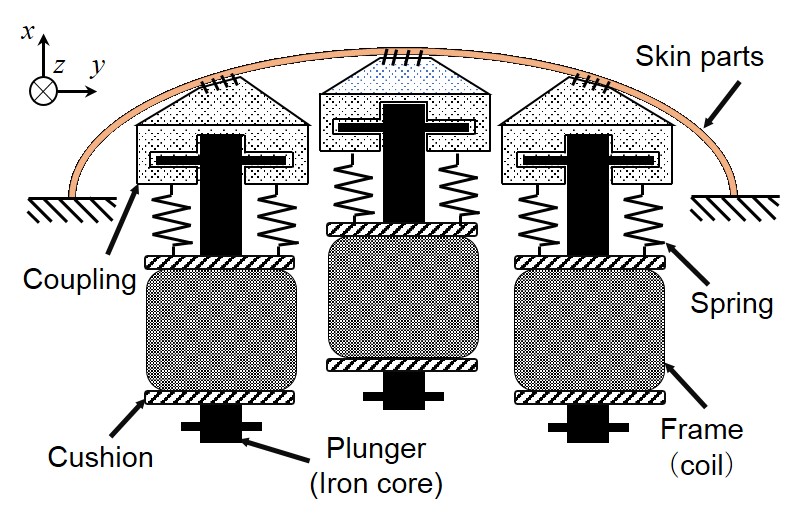
Fig.3 Mechanism to inspiratory retraction breathing
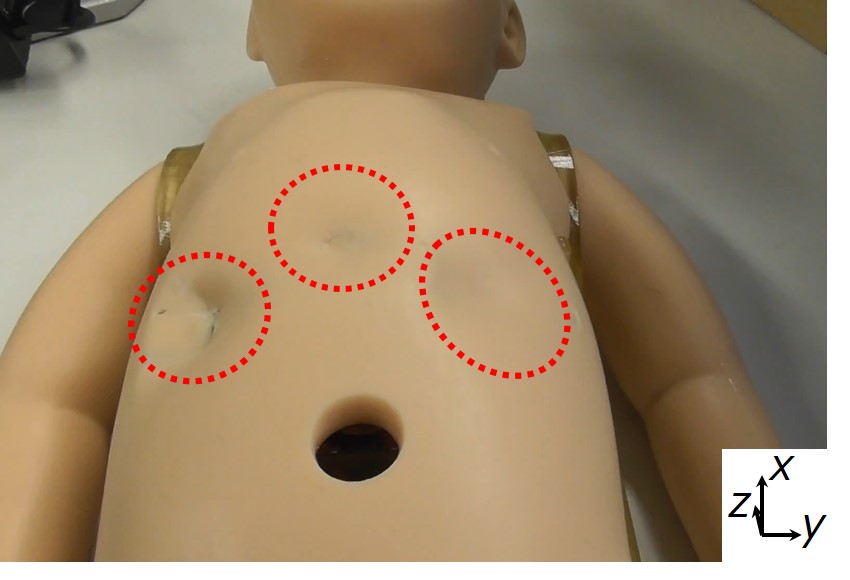
Fig.4 Abdomen surface in inspiratory retraction
In the future, we will develop more functions to simulate other vital signs, such as muscle tone and
heart rate, then integrate those functions with that of WAKABA-1.
This research was supported by the National Center for Child Health and Development.
Documents
小川駿也,菅宮友莉奈,武部康隆,今村健人,川崎智佑喜,片山保,中江悠介,高西淳夫,石井裕之:"新生児蘇生法トレーニング・システムの開発―陥没呼吸動作の再現が可能な新生児シミュレータの設計・製作―",第37回日本ロボット学会学術講演会予稿集,3M1-05,2019.

